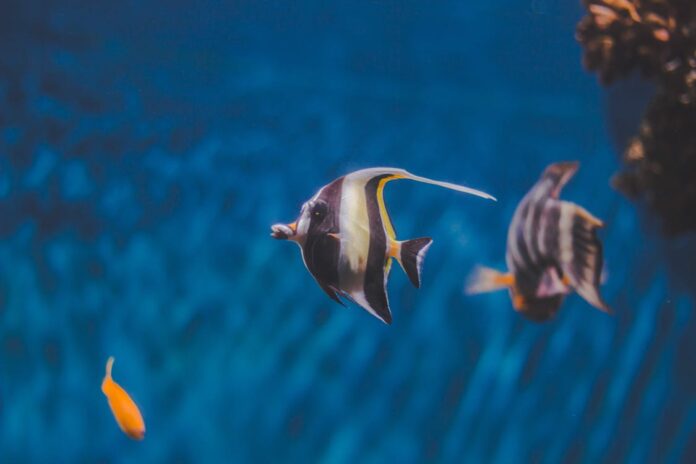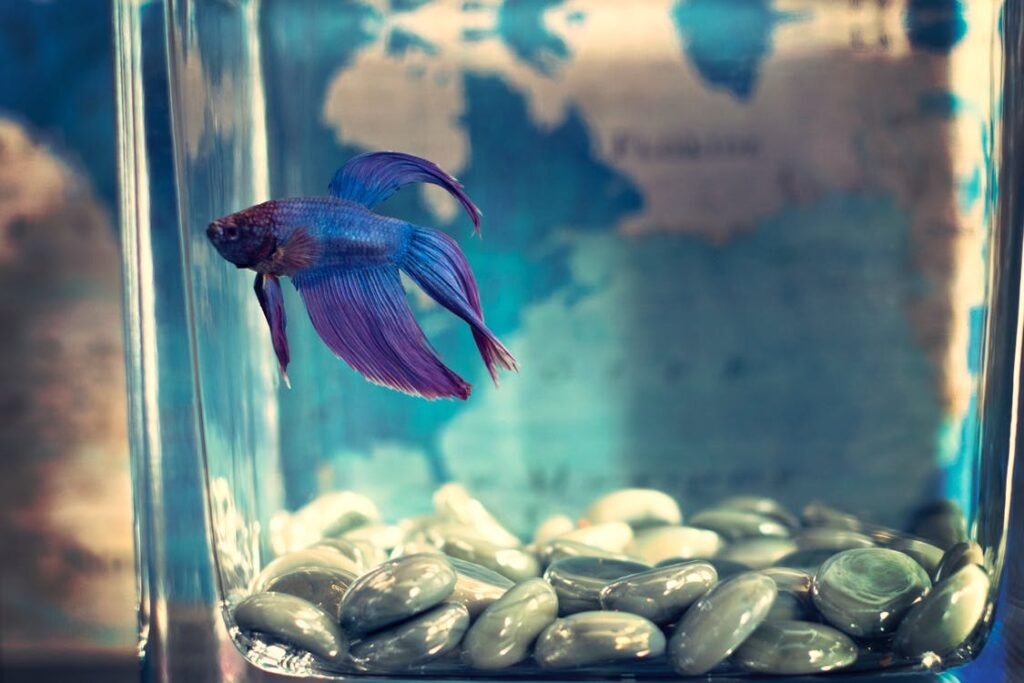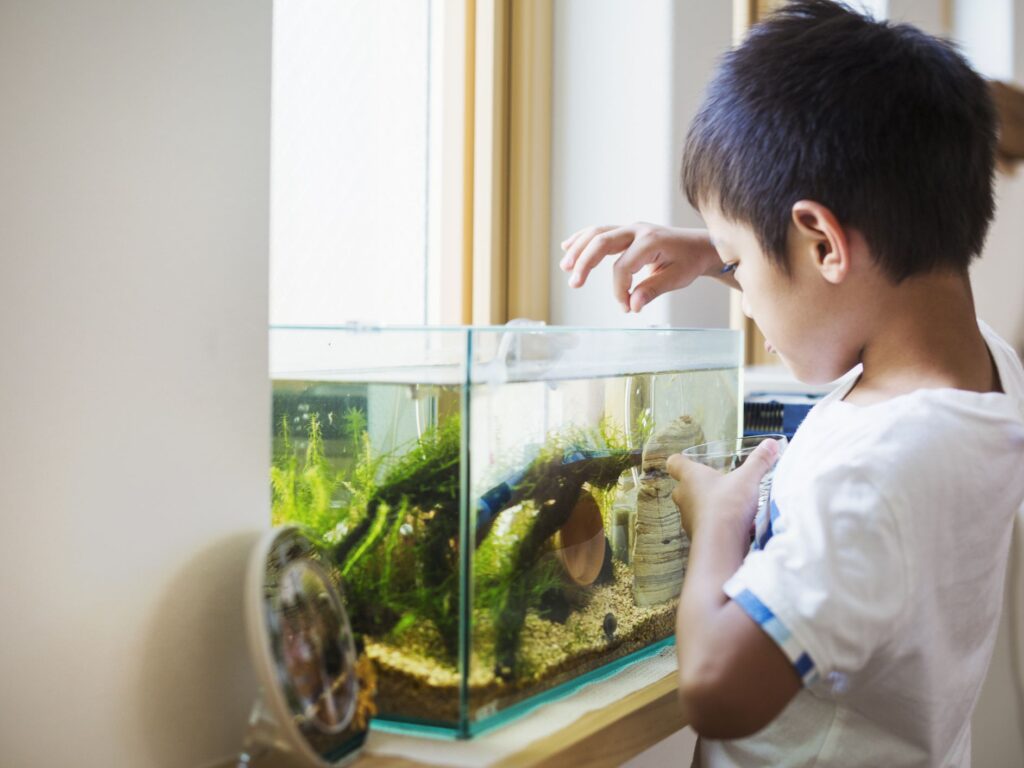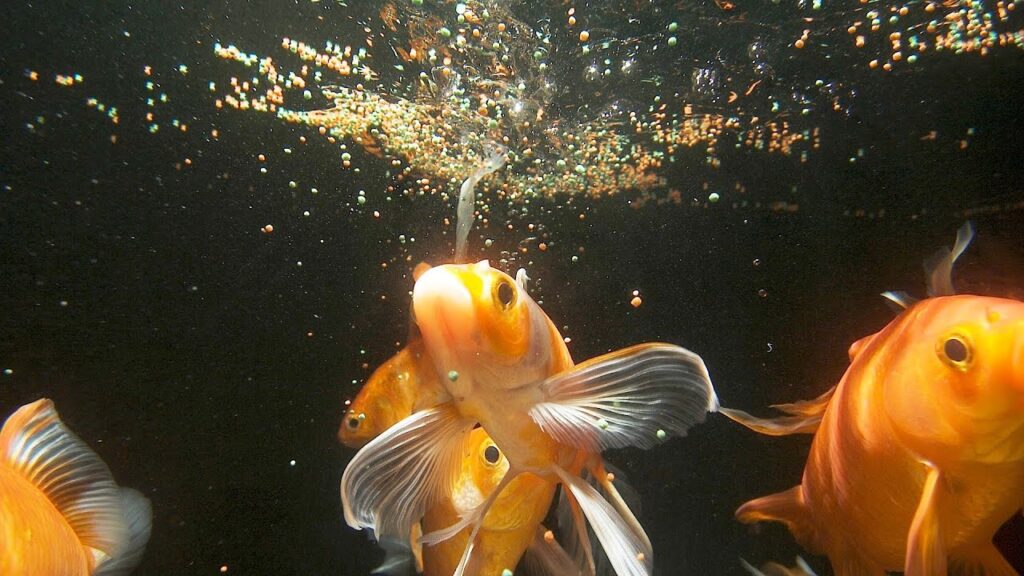
Have you ever thought about setting up an aquarium in your home? No matter the type of fish you buy, they’re all beautiful in their own way. Whether it’s a goldfish, an angelfish, neon tetra, or rainbow fish, it’s no surprise that these are the most popular species, due to their beauty and behavior, so you can’t be wrong if you choose any of these. Having an aquarium is proven to have therapeutic effects on your mind since it’s soothing and relaxing to be surrounded by water and these cute creatures. Why choose another stress reliever if you can go with such a simple yet beautiful calming tool. Also, according to feng shui, putting an aquarium in the southwest corner of your apartment will bring you a lot of positive benefits, including fighting the bad, negative energy, while generating the exact opposite. Positive energy is what you need in your everyday life. Not to mention the fact that if you choose a colorful interior for your fish, with stones, plants, cool lights, and gorgeous fish, it’ll be aesthetically pleasing for your eye, drawing you to look at your peaceful oasis when you’re stressed out during the day. There’s also a belief that an aquarium is like a magnet for wealth, happiness, and prosperity. Enough reasons for buying one?
However, if you’re already a newbie owner and you’re trying to set it up by yourself, there are some rules that need to be followed in order to take good care of the fish and make them feel comfortable in their new home. At the same time, having playful, happy, active, and above all – happy fish should be your goal and you should do all the necessary things to make it happen. First off, you need to feed them correctly.
The slightest mistake in your feeding methods can cause harm to your fish. That’s why we made a list of common feeding mistakes when starting a new aquarium. Let’s dig into it:
1. Overfeeding

This is such a common mistake that everyone will warn you about it. When doing your research about how to feed your little water friends, this is the first and foremost thing that pops up. Nonetheless, people are aware of it, but it’s still a number one problem since people keep overfeeding them! Why does this happen and how can you prevent it? It’s a common misbelief that the differences in the amount of food you give them are not significant for the fish. Therefore, adding a few more thumbs of food may seem like a harmless, good idea. In reality, this is what could potentially kill your pet. This mostly happens because their stomach is small but it doesn’t mean their appetite is. Since they’ll eat as much food as you give them, it’s dangerous for them for various reasons such as developing a fatty liver, improper digestion, and even death. A common symptom of overfeeding is stress and that could make your fish act and look shaggy, slow, and sad. But the deadliest overfeeding effect is the waste that stays if they don’t eat all the food or if they do, but there is a lot of the waste they produce, too fast for you to clean it. This turns their water into toxic water, full of substances such as nitrites and ammonia, at the same time extremely lowering their oxygen levels due to organic material decay. We all know fish need oxygen and a clean environment to survive. Your filters can’t clean the excess waste for you. They’ll likely get clogged, and that’s something you should avoid.
2. Not choosing their food wisely

Every food is not for every fish, we’re sure you’re already aware of that. However, sometimes you need some extra help when choosing the right type and brand of food since the market is full of different solutions. It can become overwhelming to understand what’s best for your little pet. The most important thing you should know is that larger fish such as hawk, tang, or clowns naturally love larger food, so you need to buy them sinking pellets or granules, whether they are catfish, place, or discuss pellets. They can be made from a variety of ingredients and it’s even possible to have them custom made according to your preferences. But for the majority of fish species, the most common food are flakes. There’s a huge variety of flakes on the market and their ingredients vary depending on the fish you have, their behavior, and other factors. Choose tropical flakes on paintfish.org if you have an angelfish, barbs, or tetras. Goldfish also adore flakes! What makes this type of food so popular is their great formula with vitamins, minerals, and other nutrients your pets need. They’re also convenient for feeding since you can crush them and feed your fish from on the surface or push it underneath the water for fish that love to be fed mid-water. Other than this, you can go with algae wafers for Catfish or shrimps and frozen food such as blood worms or krill. As a treat, you can use peas, lettuce, and fruit, just don’t forget to carefully measure the amount of food you give them.
3. Not scheduling the feeding

In order to keep your fish healthy, it’s better if you schedule the feedings and stick to the schedule so that you don’t make a mistake, overfeed them or underfeed them. If you’re a newbie then it’s easy to forget if you have fed them or not, and that could be tragic for your little pet. However, there are several opinions when it comes to the feeding schedule and the number of feedings per day. Some say that feeding once a day is enough, or you can divide it into two smaller portions, while others say you should feed your fish two or even three times a day. Considering that every species has different needs and behaviors, there still is a consensus that the most common and most secure way to be sure you’re not making any mistakes, is to feed your fish twice a day. Measuring the exact amount of food is crucial. The proper way to determine if the amount you give them is sufficient is to take a look at their behavior. The food should be eaten in less than 5 minutes. If not, it’s probably too much. If it is, you can add a little more. That’s called the rule of thumb. Other than that, don’t get tricked by the thought that your fish are hungry, just because they behave the way they usually behave when you’re feeding them. It’s just a pattern they’ve learned. Your reacting to every small sign could do them more harm than good.
Follow these simple rules and you’ll have nothing to worry about!








